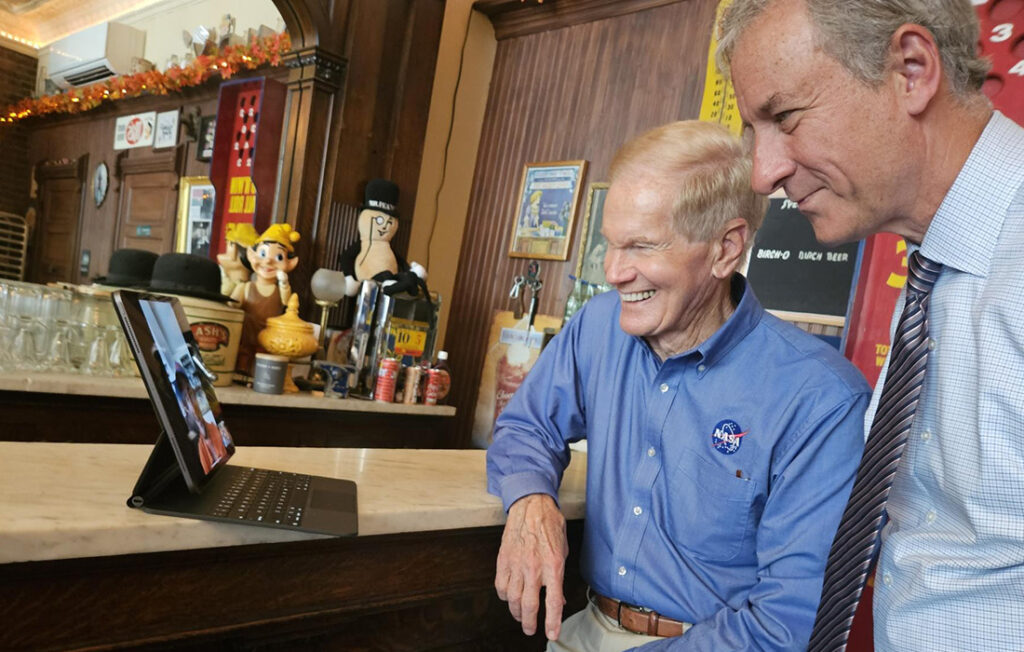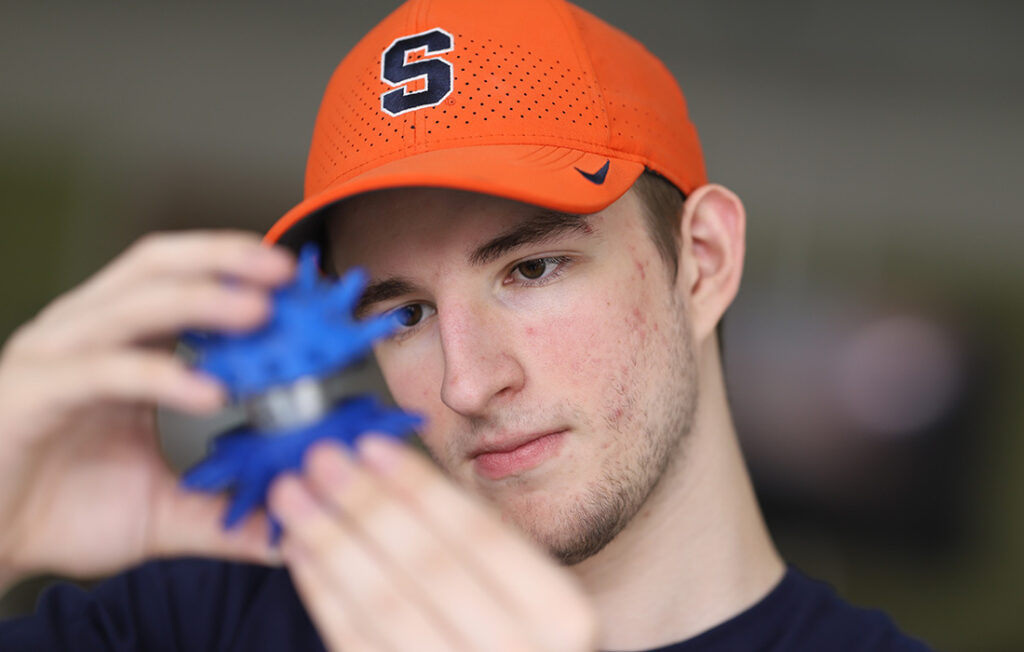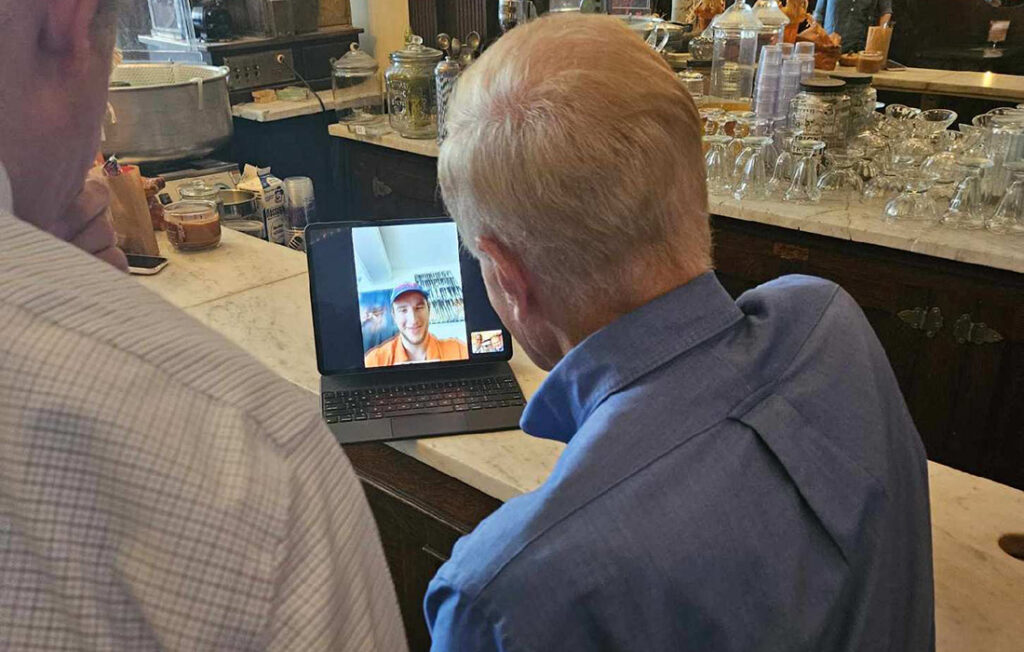
Growing up, Greg Slodysko had a deep fascination with space exploration. Games like Kerbal Space Program, which challenged players to design spacecraft for different missions, and movies like October Sky inspired him to create his own model rockets and sparked a keen interest in the world beyond our own.
“I was always excited to see photos from the Hubble Space Telescope, which has some of the best pictures we’ve ever taken of distant stars and galaxies,” Slodysko says. “I also enjoyed watching documentaries or films about space travel and even went to space camp in high school.”

Now a senior studying aerospace engineering at Syracuse University, Slodysko recently had an experience that further fueled his love for rocketry: a conversation with Bill Nelson, the current NASA Administrator. How exactly did he manage to meet with NASA’s chief officer? The answer lies in an unexpected craving for ice cream.
Nelson and Congressman Matt Cartwright visited a high school in Slodysko’s hometown of Pittson, Pennsylvania. After the event, the NASA administrator was craving a sweet treat, so they both decided to head over to a nearby ice cream shop. The shop owners were friends with Slodysko’s parents and knew he was studying aerospace engineering at the University, so they invited Slodysko’s dad to the shop while the NASA administrator and the congressman were there. This provided the perfect opportunity for Slodysko to speak with Nelson.
“When I first got the mention that I had a chance to talk to Bill Nelson, I went for it. I immediately said ‘Yes, get me in!’ These situations are rare and don’t happen often” he says.
Slodysko couldn’t physically attend the meeting since he was on campus but was thrilled to participate in an impromptu FaceTime call with Nelson. Though he was initially nervous, the conversation was filled with encouragement and support, reigniting Slodysko’s passion for aerospace engineering and potentially paving the way for a future at NASA.
“They told me I was on the right path, and they were impressed with my work. It was such an inspiring conversation that I’ll never forget” he says.

Slodysko intends to continue exploring his interest in structural design, propulsion, and aerodynamic analysis as he completes his undergraduate degree. He’s also currently completing a computer-based code that produces modular model rocket parts that are 3D printable. He aims to make this code available for free download online so that others can either create their own model rockets by adjusting code variables or work to improve the code created by him.
Additionally, he plans to enroll in graduate school and hopes to secure an internship with NASA, potentially getting to meet the administrator once again but this time, face-to-face. To Slodysko, this would be an experience that’s truly out of this world.
“I’m deeply grateful to Congressman Cartwright and Bill Nelson for this once-in-a-lifetime opportunity,” he says. “I’ll never forget this and I’m so excited for what the future holds. This is going to stick with me for a long time.”
